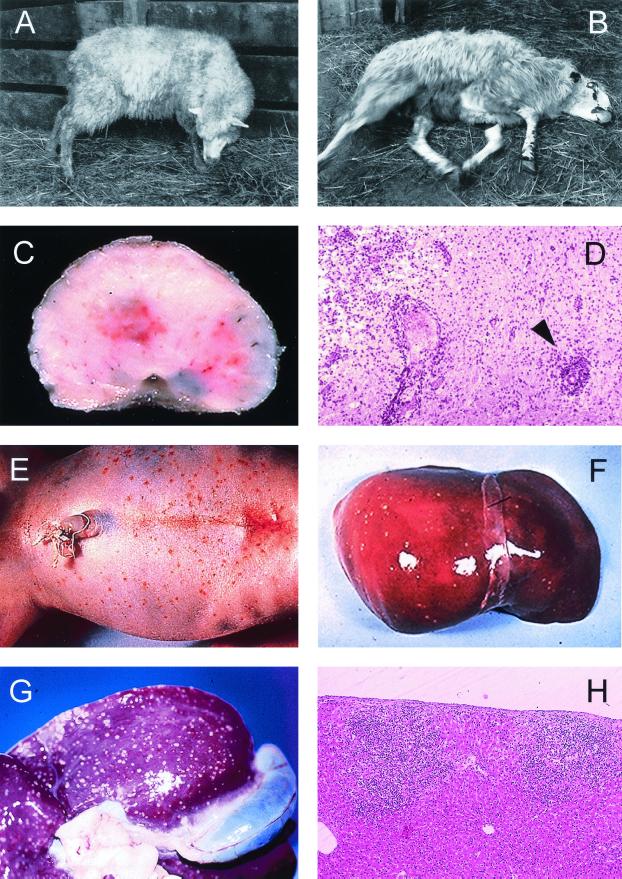FIG. 1.
Clinical and pathological characteristics of Listeria infection in animals and humans. (A to D) Neuromeningeal listeriosis in sheep. (A) Typical aspect of circling disease, first described by Gill in 1933 in New Zealand (215, 216) and the most characteristic clinical manifestation of listeriosis in ruminants; the syndrome is characterized by involuntary torticollis and walking aimlessly in circles as a result of brainstem lesions. (B) In a further step of the infectious process, animals lie on the ground with evident signs of uncoordination (paddling movements) and cranial nerve paralysis (strabismus, salivation, etc.). (C) Section of the medulla oblongata of a sheep with listerial rhombencephalitis, showing clear inflammatory lesions in the brain tissue. (D) Microscopic preparation of the brainstem showing extensive parenchymal inflammatory infiltration and typical perivascular cuffing (one is indicated by an arrowhead) (panels C and D copyright M. Domingo, Barcelona, Spain). (E and F) Stillborn with generalized L. monocytogenes infection, a clinical condition also known as granulomatosis infantiseptica and characterized by the presence of military-disseminated pyogranulomatous lesions on the body surface (E) and internal organs (F, liver of the fetus in E) and a high mortality. (G and H) Extensive pyogranulomatous hepatitis in a lamb experimentally infected with L. ivanovii, with multiple necrotic foci in the liver surface (G) and the parenchyma (H, hematoxylin/eosin-stained cut from the liver in G, showing two subcapsular pyogranulomes [magnification, ×60]).

